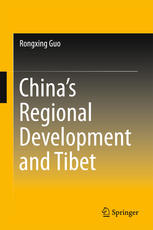

Most ebook files are in PDF format, so you can easily read them using various software such as Foxit Reader or directly on the Google Chrome browser.
Some ebook files are released by publishers in other formats such as .awz, .mobi, .epub, .fb2, etc. You may need to install specific software to read these formats on mobile/PC, such as Calibre.
Please read the tutorial at this link: https://ebookbell.com/faq
We offer FREE conversion to the popular formats you request; however, this may take some time. Therefore, right after payment, please email us, and we will try to provide the service as quickly as possible.
For some exceptional file formats or broken links (if any), please refrain from opening any disputes. Instead, email us first, and we will try to assist within a maximum of 6 hours.
EbookBell Team

0.0
0 reviewsThis book pursues both narrative and analytic approaches to better understand China’s spatial economic development and its implications for Tibet. Accordingly, this book focuses on Tibet – an autonomous region in the far west of China – as the subject of an in-depth case study, highlighting its unique geopolitical and socioeconomic features and external and boundary conditions. China’s great diversity in terms of physical geography, resource endowment, political economy, and ethnicity and religion has posed challenges to the studies of spatial and interprovincial issues. Indeed, the Chinese nation is far too huge and spatially diverse to be easily interpreted. The only feasible approach to analyzing it is, therefore, to divide it into smaller geographical elements so as to arrive at better insights into the country’s spatial mechanisms and regional characteristics. In this context, the book combines analytic and narrative approaches.